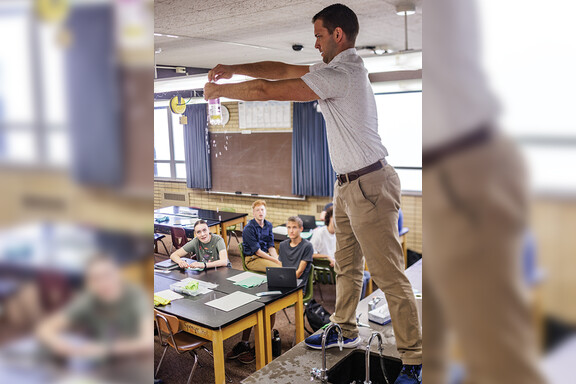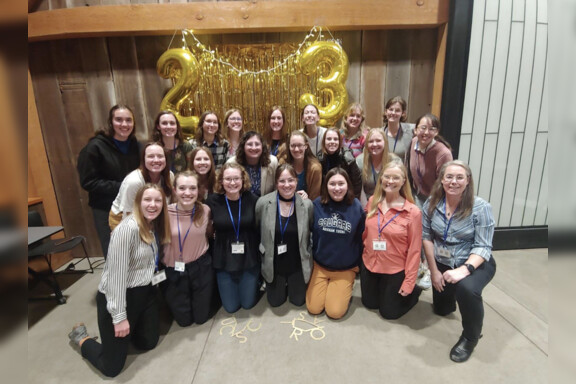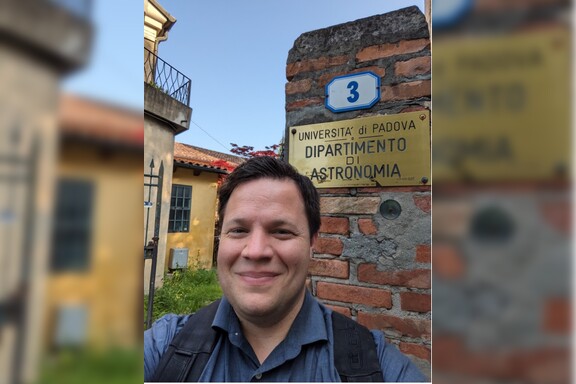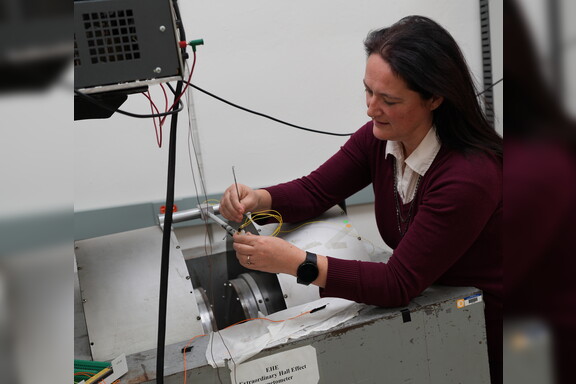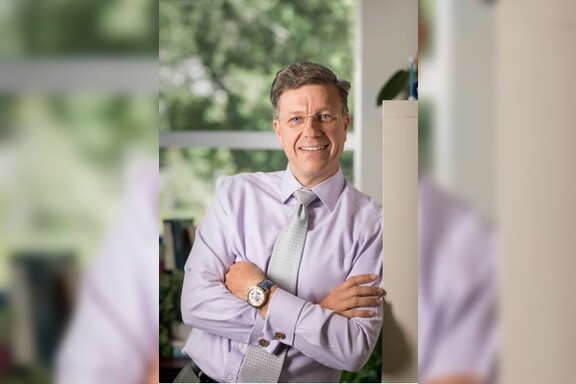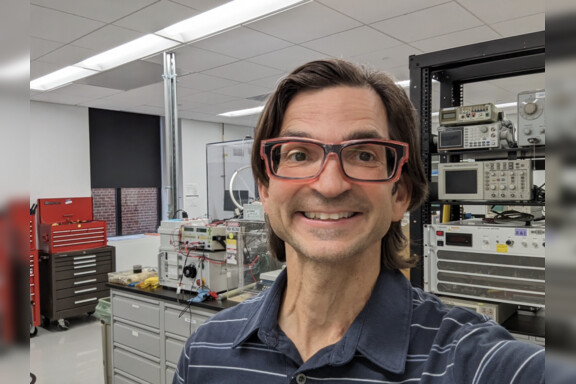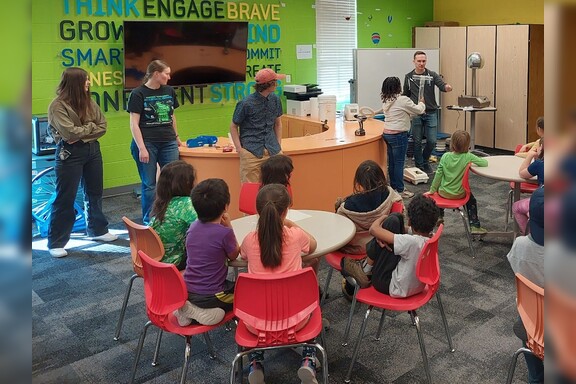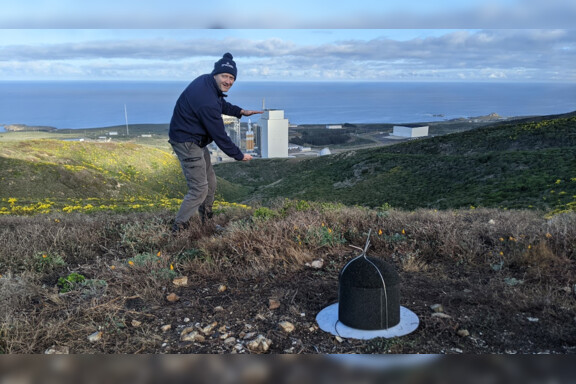In the original Star Wars film, R2D2 projects an image of Princess Leia in distress. The iconic scene includes the line still famous 40 years later: “Help me Obi Wan Kenobi, you’re my only hope.”
BYU electrical and computer engineering professor and holography expert Daniel Smalley has long had a goal to create the same type of 3D image projection. In a paper published this week in Nature, Smalley details the method he has developed to do so.
“We refer to this colloquially as the Princess Leia project,” Smalley said. “Our group has a mission to take the 3D displays of science fiction and make them real. We have created a display that can do that.”
First things, first, Smalley says. The image of Princess Leia is not what people think it is: It’s not a hologram. A 3D image that floats in air, that you can walk all around and see from every angle, is actually called a volumetric image. Examples of volumetric images include the 3D displays Tony Stark interacts with in "Iron Man" or the massive image-projecting table in "Avatar."

Dr. Smalley with his student researchers.
Smalley and his coauthors have devised a free-space volumetric display platform, based on photophoretic optical trapping, that produces full-color, aerial volumetric images with 10-micron image points by persistence of vision.
The technique, as described by Nature, “uses forces conveyed by a set of near-invisible laser beams to trap a single particle — of a plant fiber called cellulose — and heat it evenly. That allows researchers to push and pull the cellulose around. A second set of lasers projects visible light (red, green and blue) onto the particle, illuminating it as it moves through space. Humans cannot discern images at rates faster than 10 per second, so if the particle is moved fast enough, its trajectory appears as a solid line — like a sparkler in the dark.”
“In simple terms, we’re using a laser beam to trap a particle, and then we can steer the laser beam around to move the particle and create the image,” said undergrad coauthor Erich Nygaard.
Smalley said the easiest way to understand what they are doing is to think about the images they create like 3D-printed objects.
“This display is like a 3D printer for light,” Smalley said. “You’re actually printing an object in space with these little particles.”
So far Smalley and his student researchers have 3D-light-printed several tiny images: a butterfly, a prism, the stretch-Y BYU logo, rings that wrap around an arm and an individual in a lab coat crouched in a position similar to Princess Leia as she begins her projected message.
While previous researchers outside of BYU have done related work to create volumetric imagery, the Smalley team is the first to use optical trapping and color effectively. Their method of trapping particles and illuminating it with colorful lasers you can see is novel.
“We’re providing a method to make a volumetric image that can create the images we imagine we’ll have in the future,” Smalley said.
How is a volumetric image different than a hologram?
A holographic display scatters light only at a 2D surface. If you aren’t looking at that surface, you won’t see the 3D image because you must be looking at the scattering surface to see the image. A volumetric display has little scattering surfaces scattered throughout a 3D space — the same space occupied by the 3D image — so if you are looking at the image you’re are also looking at the scatters. For this reason, a volumetric image can be seen from any angle.
To see the full Nature study, click here:
//www.nature.com/articles/nature25176
More Information on This Article
News and Events
